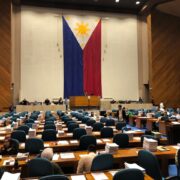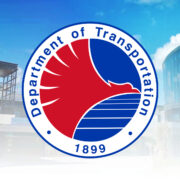‘Fire weather’ over Los Angeles

Fire weather” is a term increasingly used to describe the atmospheric conditions that have rendered California’s recent wildfires uncontrollable. This emerging pattern combines hot, dry air that draws moisture from the soil and vegetation, strong winds exceeding 100 kilometers per hour that drive fire fronts forward and scatter embers across vast distances, prolonged droughts or delayed rains, and dry lightning storms that can quickly spark fires.
In tropical climates like ours, we’re accustomed to rainy, stormy, or hot and humid weather. In temperate regions, cool and wintry weather is the norm. But fire weather is relatively new to the lexicon, and its significance cannot be overstated. If there’s one weather phenomenon that has heightened Californians’ awareness of the unpredictable effects of climate change, it’s this. The closest dictionary term might be “firestorm,” but that focuses on the fire itself rather than the atmospheric conditions that transform seasonal brush fires into catastrophic infernos.
Global warming has disrupted the familiar rhythms of the seasons, extending heatwaves and dry periods. Summers and dry seasons have grown longer, leaving farms and wildlands parched and laden with combustible fuel. In some regions, prolonged droughts occur, while others face torrential rains that cause urban flash floods, overwhelming drainage systems and turning city streets into rivers overnight.
Compounding this, shifting atmospheric patterns produce powerful, sustained winds like California’s Santa Ana winds. These winds not only drive flames into residential areas but can also carry embers that ignite spot fires miles away.
Last week, massive wildfires devastated communities on both sides of downtown Los Angeles in a matter of hours, including the affluent Pacific Palisades and middle-class Altadena neighborhoods. Even California’s most experienced firefighters are struggling to combat these unprecedented blazes. When entire communities burn simultaneously, no amount of manpower or equipment can keep pace with the fires.
At one point, firefighters were battling eight large fires at once while the Santa Ana winds temporarily calmed. The largest, the Palisades Fire west of LA, has scorched nearly 10,000 hectares, destroyed 5,300 structures, and claimed the lives of at least 10 individuals, and is only 31% contained after a week. The second largest, the Eaton Fire east of LA, has burned nearly 6,000 ha and over 7,000 structures in Altadena, killed more than a dozen residents, and is 65% contained. However, containment is only an estimate, and with the Santa Ana winds poised to return, the situation remains unpredictable.
My daughter Nadya and her family recently relocated from West LA to Eagle Rock, home to a large Filipino community. Eagle Rock neighbors Pasadena, which has become a refuge for evacuees from Altadena. I spoke to Nadya just a few hours before the Eaton Fire erupted on the evening of Jan. 7. She mentioned the high alert for Santa Ana winds but didn’t express concern about fire danger. It was I who reminded her of the connection between these winds and wildfires.
That night, they received an emergency alert about the Eaton Fire, which had started in the San Gabriel Mountains. By 7:00 the next morning, I called to check on them. They had just received an advisory to prepare for evacuation—a step below mandatory evacuation. Checking Google Maps, I realized how close they were to Altadena, which had been entirely consumed by the fire.
I also reached out to my brother Goli, who lives in Brea, asking him to stay in regular contact with Nadya and help her evacuate if the fire approached the Ventura Freeway. He reassured me that he was already calling her hourly. During a video call, I urged Nadya not to take any risks and reminded her of the dangers of toxic smoke. My 7-year-old grandson Alonso chimed in to tell me there was “a bunch of smoke” outside but none inside their apartment. He added, with a touch of cheer, that school was closed anyway.
Thankfully, the evacuation warning for Eagle Rock has since been lifted. Life in Los Angeles is gradually resuming its familiar rhythm, even as the city remains shrouded in smog and a sense of gloom. Schools are reopening, hinting at normalcy. Yet, “fire weather” has left an indelible mark—a portent of a meteorological future fraught with extreme dangers. It is a call to action, compelling all of us who share this planet to make urgent decisions now to mitigate the risk of future losses.
—————-
public.lives@gmail.com





















